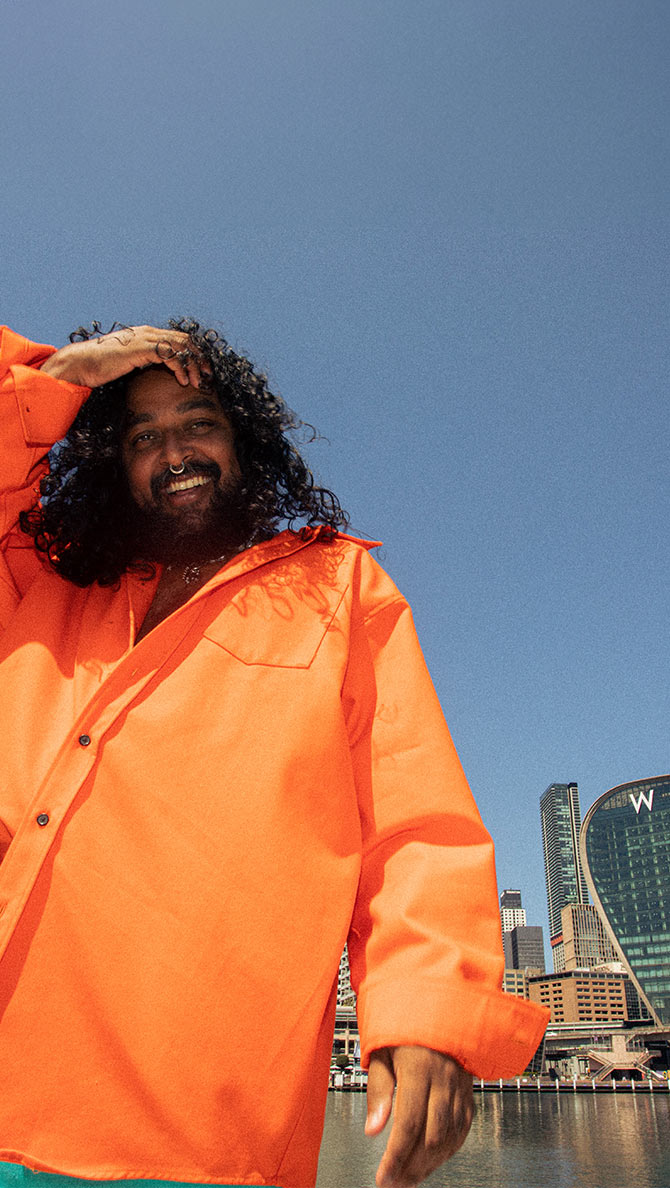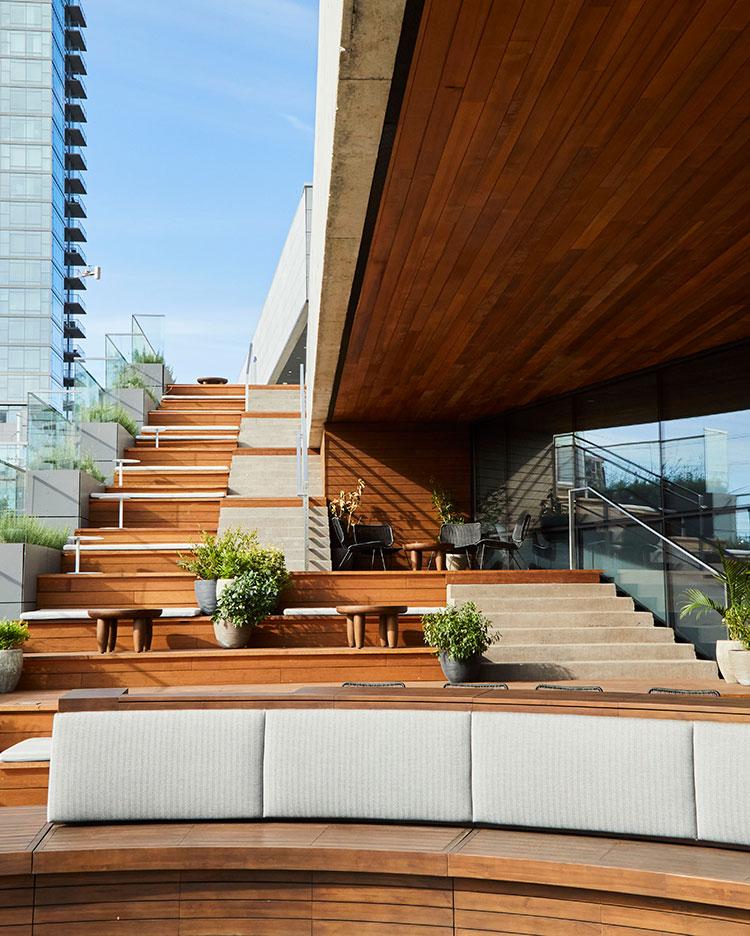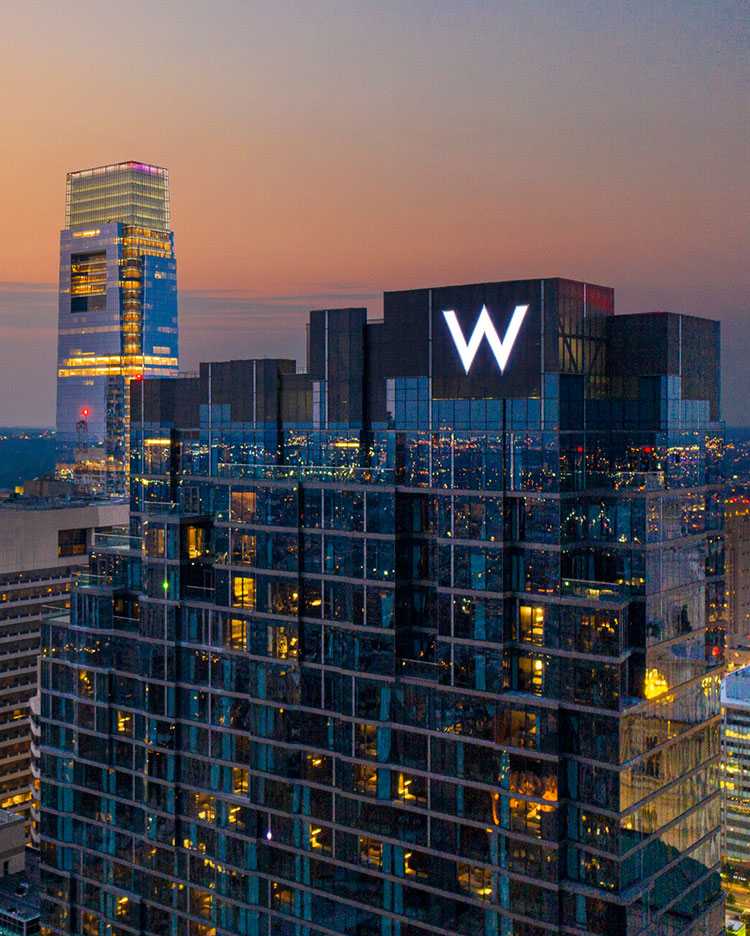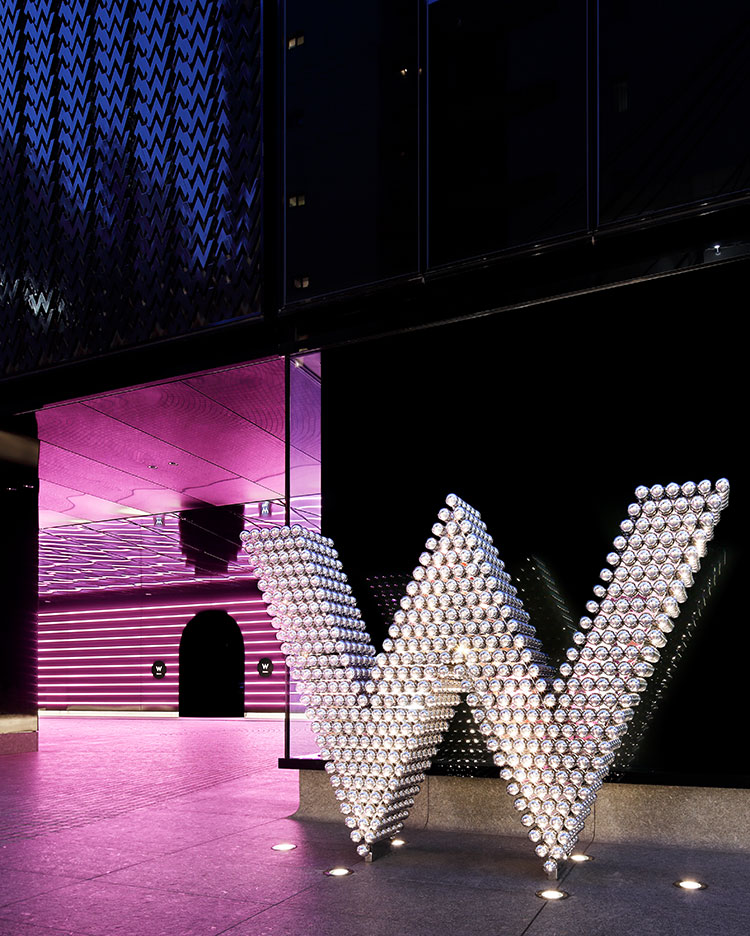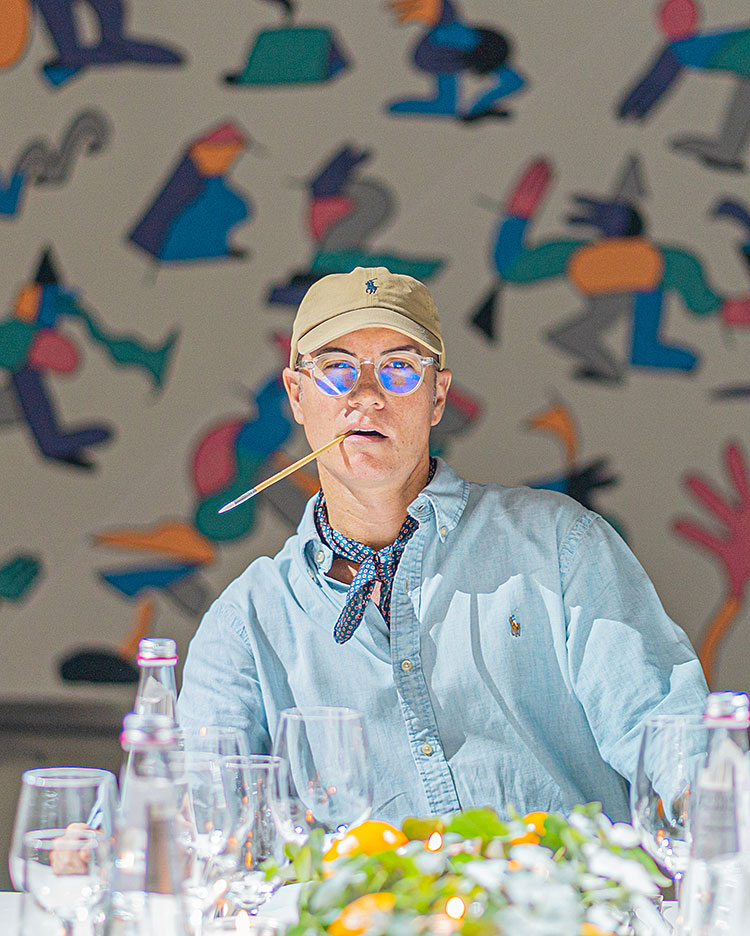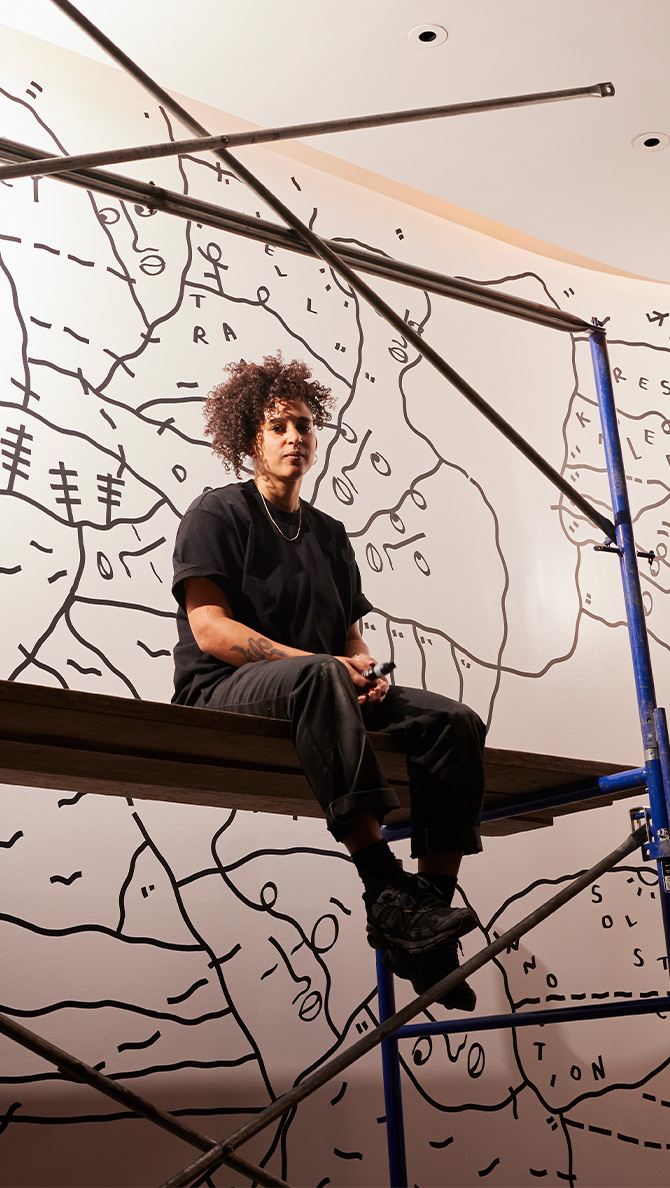
Ten Questions With Shantell Martin
Ten Questions With Shantell Martin
The renowned British-born visual artist Shantell Martin has become known for her immersive installation work, which finds her drawing thick, bold lines, often directly onto the walls of some of the world’s finest galleries and shared spaces.
“I used to say home is where my futon is,” she says, while relaxing at a suite in the W New York Union Square. “I think a lot of inspiration comes from traveling, from being out there in the world, from connecting. Because of that, I’ve always been a little bit of a nomad.”
She lived in New York for several years, and had residencies at the 92nd Street Y’s Milton J. Weill Art Gallery and taught at NYU Tisch School of the Arts, amongst many other accolades. Martin got her start with live, larger-than-life drawing experiences when she would go to clubs in Japan and offer to make art. Working with dancers and DJs, she would start drawing “for hours and hours and hours,” she says. She would often draw images that were projected onto the walls. “When I was in Japan, I believe I’ve drawn for five, six, seven hours. Just drawing to minimal techno music, zooming in, zooming out, drawing left, drawing right, erasing, just getting lost in that space.”
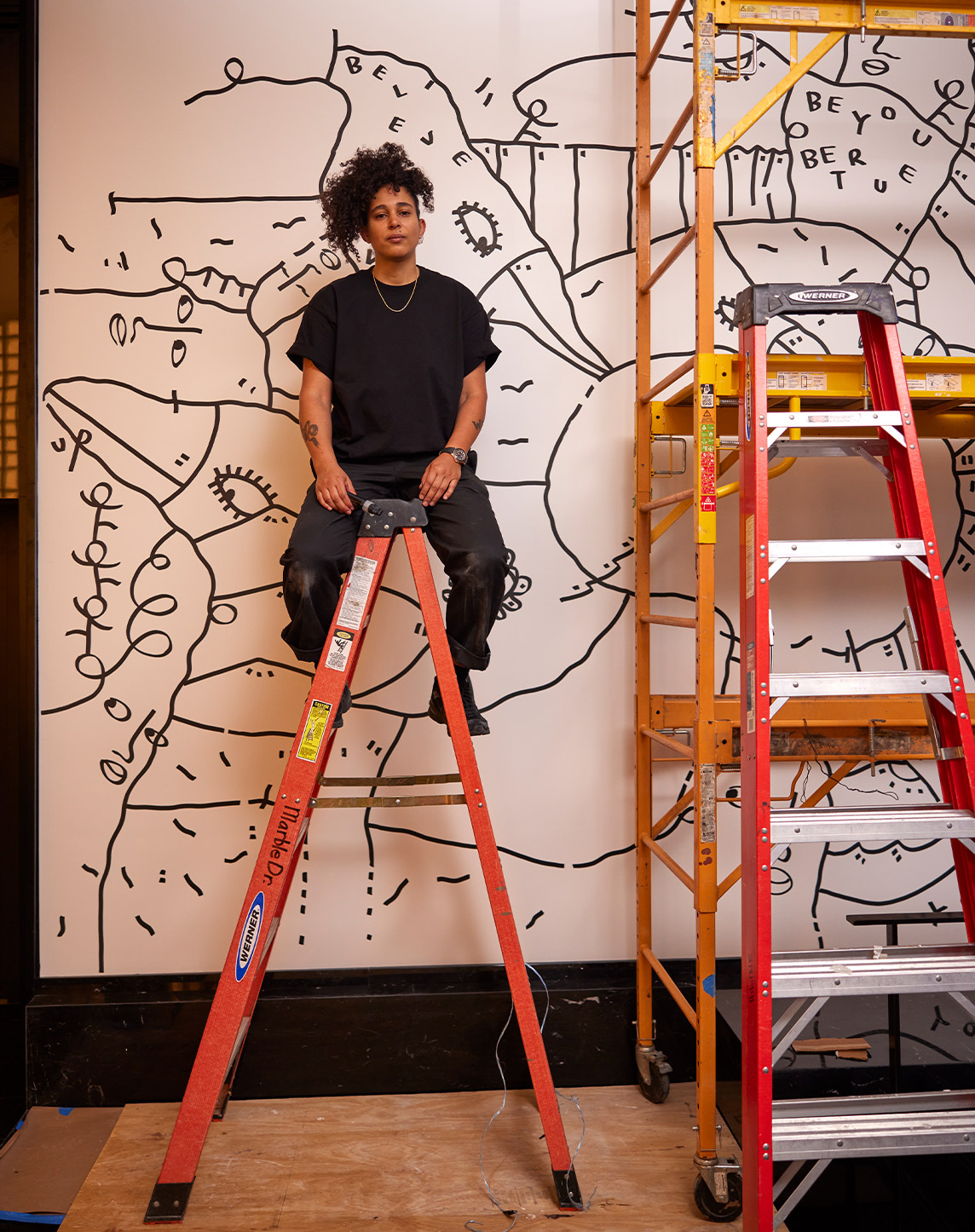
Shantell Martin works on the new mural at W New York – Union Square
She collaborated with W New York – Union Square for a mural that will greet guests when they enter, a work she says was inspired by the energy of the city. Interacting with people, whether they’re in the room while she’s drawing or appreciating her work long after she’s left town, is the nexus of her work. It’s all part of her goal to bring people together to remind them of their shared humanity and community.
“Community is important to humanity. We are a community of people living on this planet,” she says. “Art creates spaces and communities and moments where people can come together and have something to talk about or have something to experience. And so art is a great thing that brings people together.”
(This interview has been edited for concision and clarity)
One of the guiding concepts behind this transformation of the W New York – Union Square is paying tribute to the Union Square neighborhood. What does this area mean to you?
So I lived in New York for 15 years. We’re in Union Square, and Union Square is almost the heart of New York in many ways. You’ve seen activism here. You’ve seen celebrations here, you’ve seen fairs here. You’ve had kids that have grown up skateboarding here, you’ve got the farmers market. Everyone has a story to tell.
You are always traveling, and you have lived in many different cities. What is it about the nomadic lifestyle that appeals to you?
As an artist, I feel like my art lends itself to travel, to connect, to go out there in the world. If I’m in one place, that means I’m being inspired only by the things that are around me. I think a lot of inspiration comes from just traveling. And so I think because of that, I’ve always been a little bit of a nomad. I’m from London and I lived in Japan for many years, then New York for many years, then Jersey City for many years, and now LA. I think all of those chapters or places have inspired my line and the work and the type of projects that I’ve worked on.
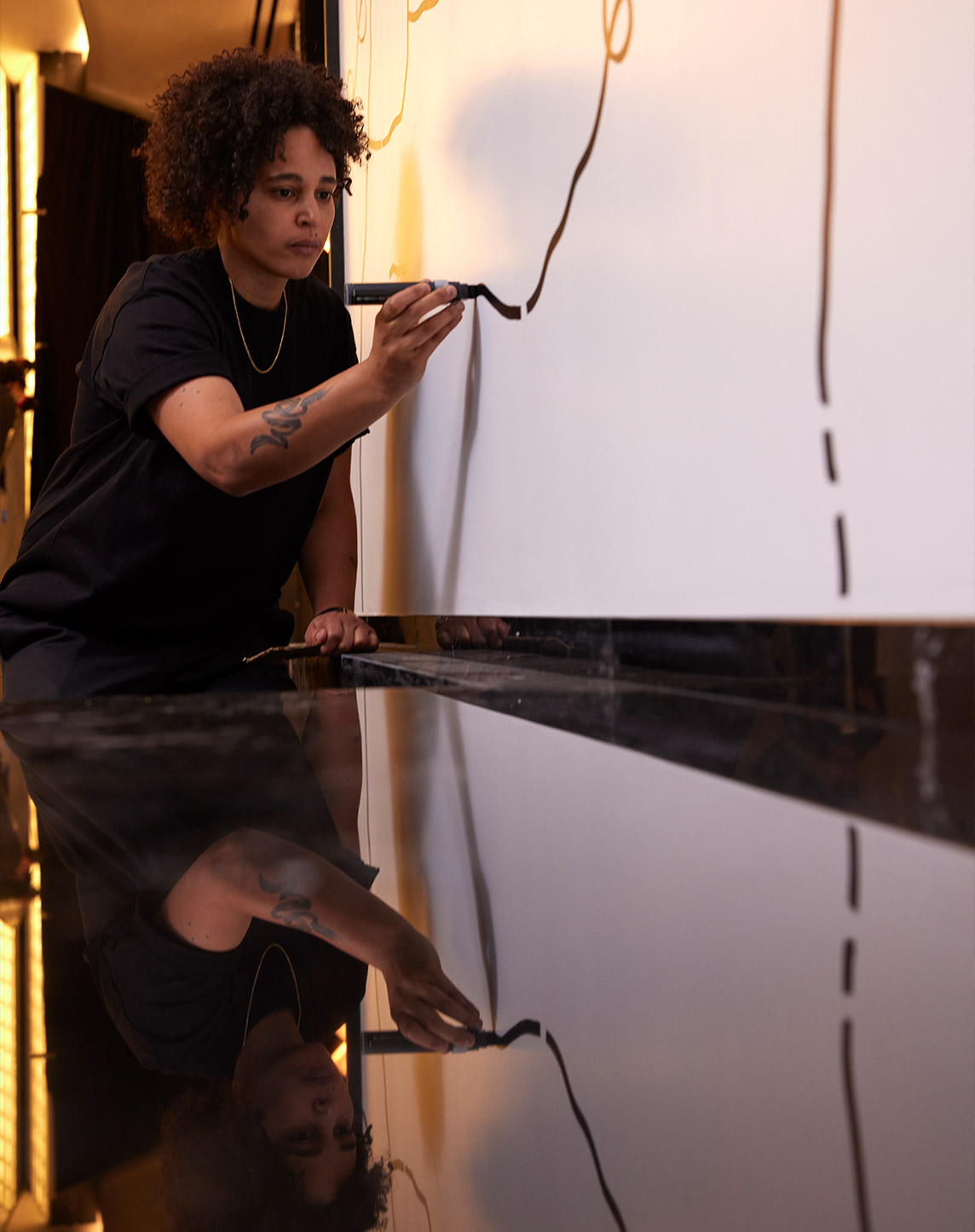
Martin adds detail directly to the wall mural.

Martin adds detail directly to her wall mural.
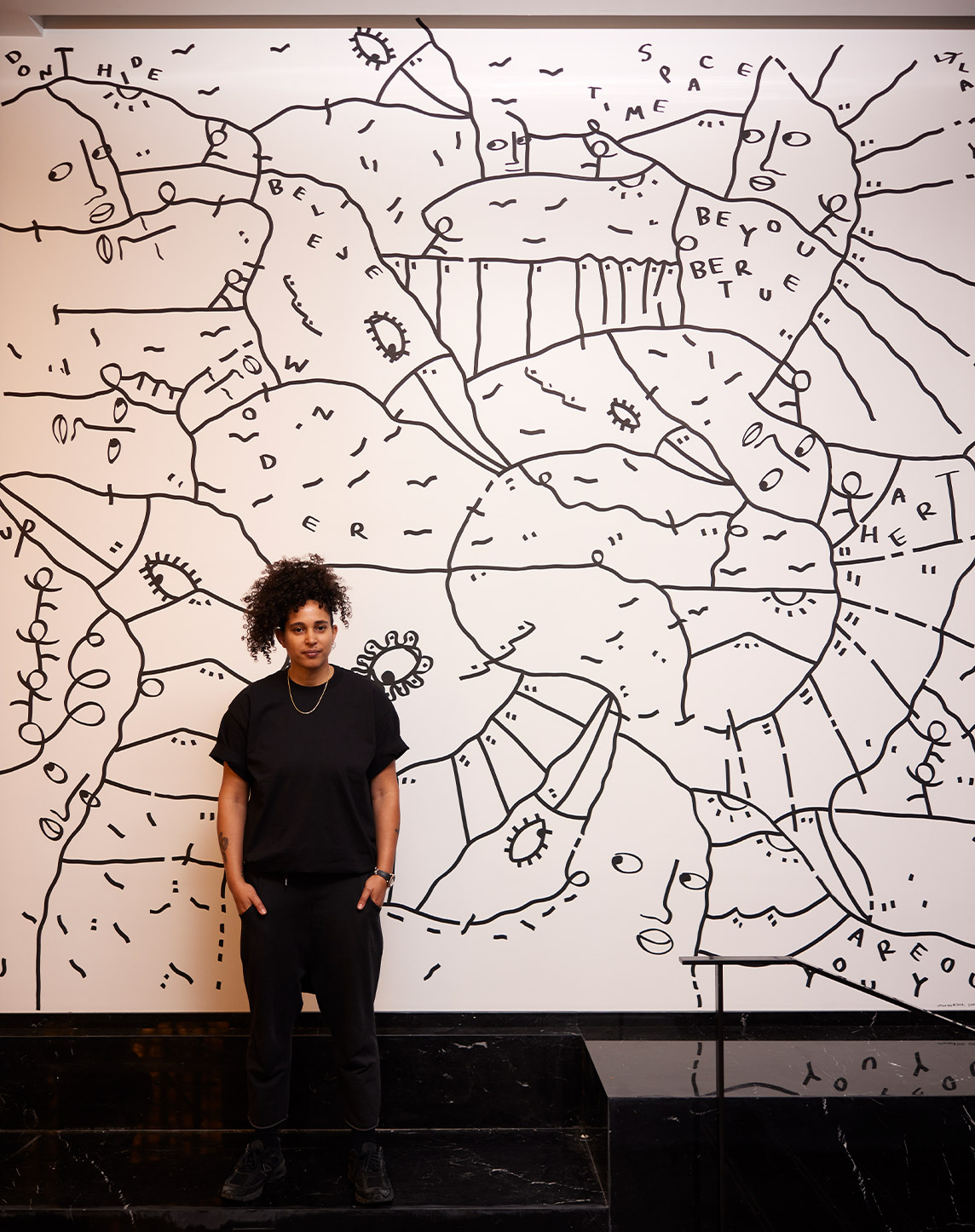
Shantell Martin strikes a pose in front of her new mural at W New York – Union Square

Shantell Martin strikes a pose in front of her new mural at W New York – Union Square
What do you want guests to feel when they look at the work you’ve done for the W New York – Union Square?
I want them just to be surrounded by the work, by the lines. And already, I’ve been here a couple of days working on the mural, and I’ve seen people walk in and look up and smile. And when you can bring a smile into someone’s day, when you can bring in that moment of inspiration and when you can connect with them through those lines, you’re giving them permission to want to be creative themselves. You’re giving them permission for them to want to be themselves, and you’re giving them permission to want to discover more about the artwork itself and therefore more about the hotel itself.
How much of what you’re making here, or just in general, do you plan out ahead of time and how much it comes to you in the moment?
The way that I work as an artist, it’s a mixture of things. It’s part analytical, planned and strategic, and then it’s part spontaneous and stream of consciousness. So for example, for this project, I spent some time in Union Square Park, walked around, had a tour of the hotel, read the philosophy of the renovation and from that created key words and thoughts that I wanted to use to inspire me to create the work. So that’s a little bit of the planning beforehand.
And then after that, it’s about bringing that pen and just letting it dance across the wall, because I also want the work to feel like it’s as site specific as possible. It wants to be the work that is relevant to this place and in this time and in this moment. And I think if I go away and create something and then try and bring that in, it doesn’t have that same connection. So what you’re going to see is all these lines and words and phrases and characters that have been spontaneously drawn on the wall, but from a way of absorbing the environment around me, absorbing Union Square outside there, absorbing this philosophy that I’ve had so that then I can come in and have these lines dance everywhere.
“Art creates spaces and communities and moments where people can come together and have something to talk about or have something to experience.”
SHANTELL MARTIN
So I hear you always keep four words in mind before you start a project. What words did you have in mind for this project, and what do they mean to you?
So with this specific project, the words that I had in mind were community, heart, connection and union.
This is a space for community. What is that space when you step outside into Union Square Park? It’s about community. It’s about the neighborhood. It’s the city. It’s the people, their heart. In a way, I feel like the elements and the colors and the warmth of the place, it’s about heart. And within heart there is the word “art.” So that resonates within there. And then connection, we’re connecting people. An extension of that union is another way of saying community or connection and heart in a way. So it’s almost a summary of all of those together.
How do you get into the right mindset before you begin the live drawing sessions? What do you have to do to psych yourself up, both physically and mentally?
So before I start any project, for me, I’m approaching it almost like a meditation. Drawing in a way is a meditation. So I’m approaching it with good intention, and I’m approaching it in a way where I want my mind to be free and just soak up the atmosphere in a way. In addition to that, my process is also to make sure that I’ve had some good sleep and I’m hydrated. I take care of those physical things because technically, when I’m drawing, I’m drawing a fluid line and I want to make sure that there’s no drops. I want to make sure there’s no smudges. I want to make sure that there’s no technical accidents. And that takes a lot of focus and awareness and practice. And that’s where it almost feels like meditation. Because as I’m drawing, I’m not just thinking about what this shape might become. I’m also thinking about how to make this line feel as perfect and as practiced and as confident as it needs to be.
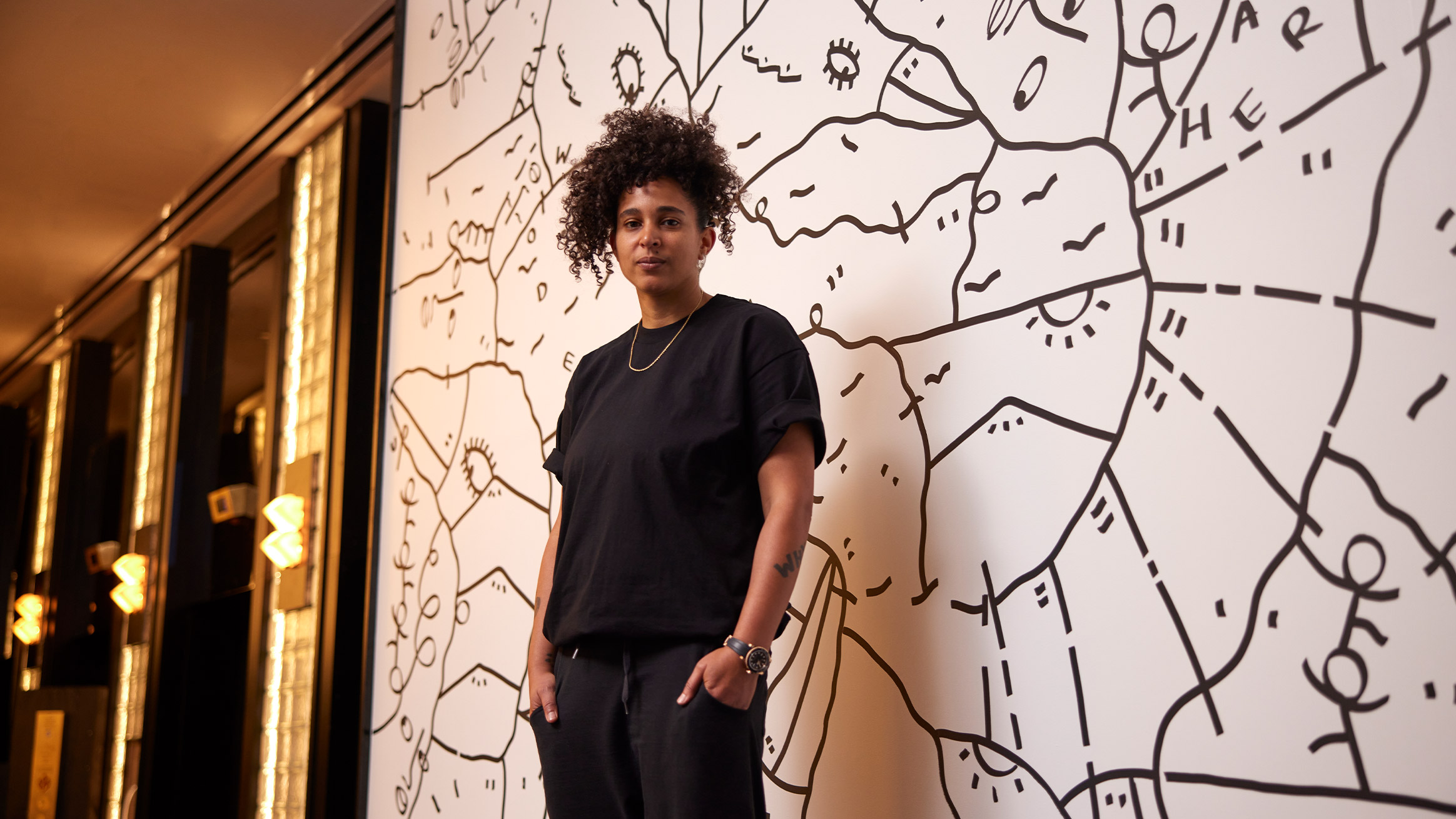
W New York – Union Square’s new mural by artist Shantell Martin
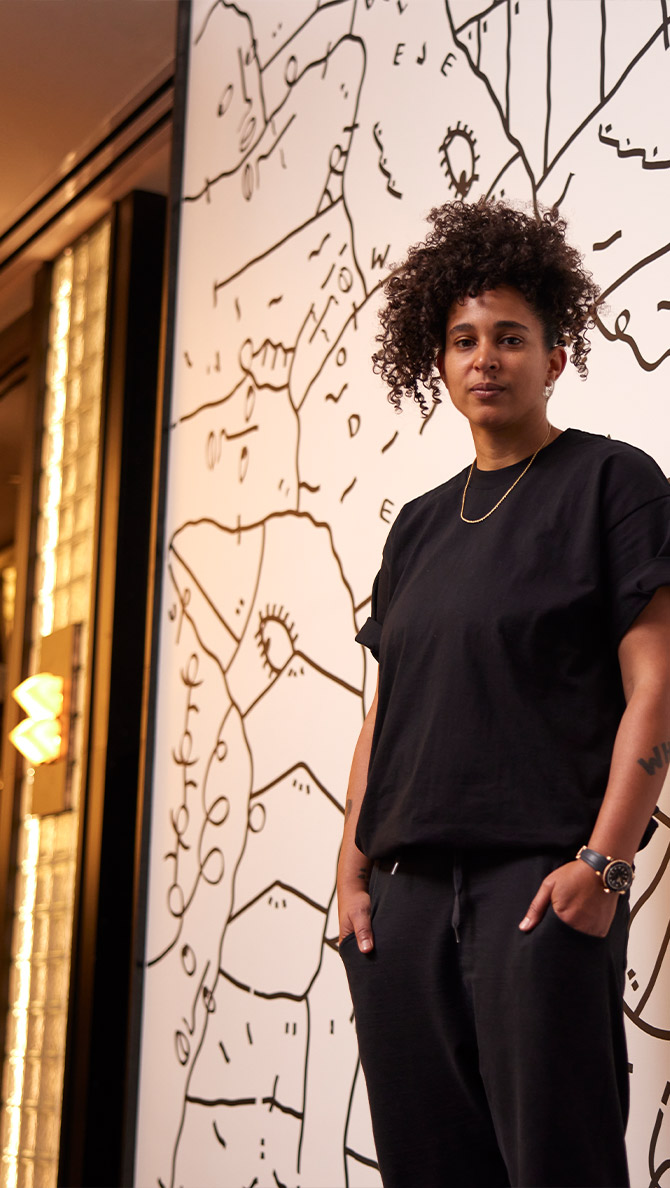
W New York – Union Square’s new mural by artist Shantell Martin
What do you recall about the first time you tried to combine live drawing and a music venue atmosphere? Where did that idea come from and what do you remember about it?
Many years ago when I lived in Japan, almost like my past life, someone had asked me to draw in a venue where there would be a band playing. At that time, I was drawing very, very small. So the work that I was doing was very insular and tiny.
So it wouldn’t make sense to draw live next to a band if the work I was doing was so tiny. But I could draw under a projector and project that. So the first time I drew live was over two decades ago. I would draw under an overhead projector, and I would draw in a notebook with pens and paper, a magnifying glass and post-it notes. And I would draw in real time to dancers and musicians.
And what I noticed about when you draw real time with an audience is that you don’t have time to think. You don’t have time to plan, you don’t have time to hesitate. More importantly, you don’t have time to draw like anyone else. You only have time to be yourself and to draw like yourself. And for me, that’s something magical about that, because a lot of the time visuals in venues and spaces are in the background. Yeah, but when you’re drawing it real time, it becomes the foreground because you’re creating it for the people in that moment, in that time, in that space.
Fast forward 20 years, and I’m drawing live in the way that I drew in the clubs. But now instead of it on a small notepad under a projector, it’s on the walls. And there is in a way a live component because people are walking in and out of the lobby or people are working in the space, and if they know it or not, they’re the audience. And that audience and kind of energy propels me to draw and be myself when I’m creating those lines.

Shantell Martin works on the new mural at W New York – Union Square
You did a live drawing collaboration with Kendrick Lamar. What do you remember about that experience?
So I did visuals for Kendrick Lamar at Art Basel. I think this was the end of 2016. And for me, that was a fun experience. I got to project on a 360 degree dome in Vienna, on the beach. They created this massive dome. Collaboration has been a part of my work since I’ve been creating. So to collaborate with someone that works with a different medium, that perhaps approaches it in the same way, was really beautiful.
With myself and Kendrick, we got to make a video together where he made beats to inspire my drawings. And then in turn, those drawings inspired his beats. And it was really interesting to see the way that he would create the beats live, because that’s very similar to the way that I draw and the way that I create music. So it’s nice to see the process of someone else, especially someone that is extremely successful in their field. But then when you break it down to just how creativity happens, there’s such a similar thread, and that’s really beautiful to see where other creatives are utilizing different mediums and different outcomes and different results. But the way that they get there can be quite similar to the way that you create, even though it looks very different.
You travel a lot. Once you get into a city and you’ve already checked in, what is usually the first thing you like to see in the city?
So if I’m traveling to a different city and I’ve just checked in, if it’s in Europe or Asia, I’m going to sleep for hours, because I’ve probably not slept on that plane. But other than that, I’m thinking about all the people that I know in that city. And then by the time I land, I can reach out to everyone and say, “hey, I’m in town, I’m in town, I’m in town,” and then go out, eat some good food, go see some art.
I went to school in London, I went to Saint Martin’s, and a lot of international students study there. So a lot of those students went out into the world, and then just from living in New York for 15 years, living in Tokyo, living in LA, I think I pretty much know people everywhere. So when I travel somewhere, my mind is usually jogged about who lives there, and then I’ll reach out. And if they’re not in town, they usually say, “hey, you should meet up with this person.” And so I love to meet up with a friend of a friend or even a friend’s parents, and kind of get a taste of the city through their eyes.
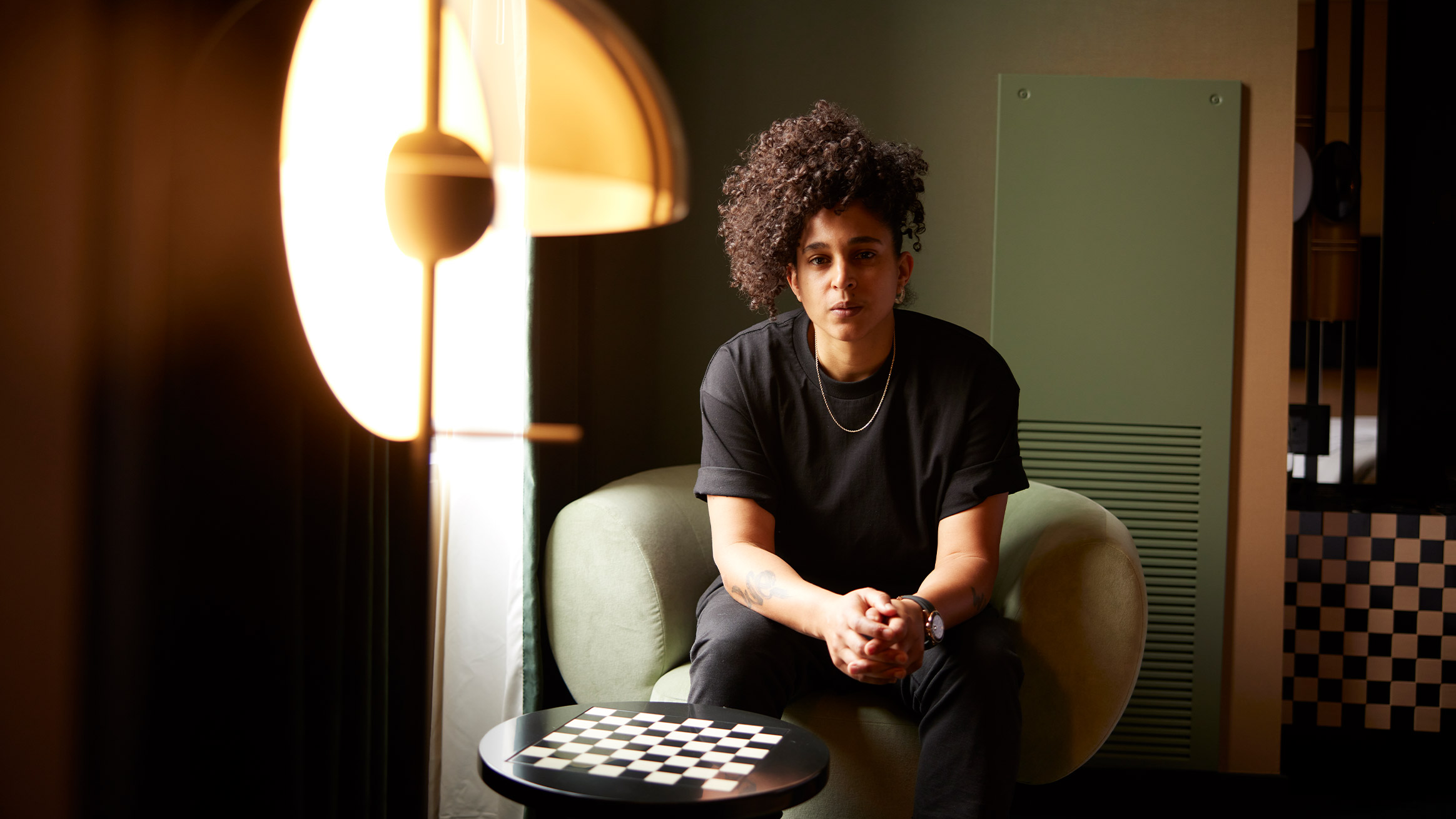
Shantell Martin sits in W New York – Union Square
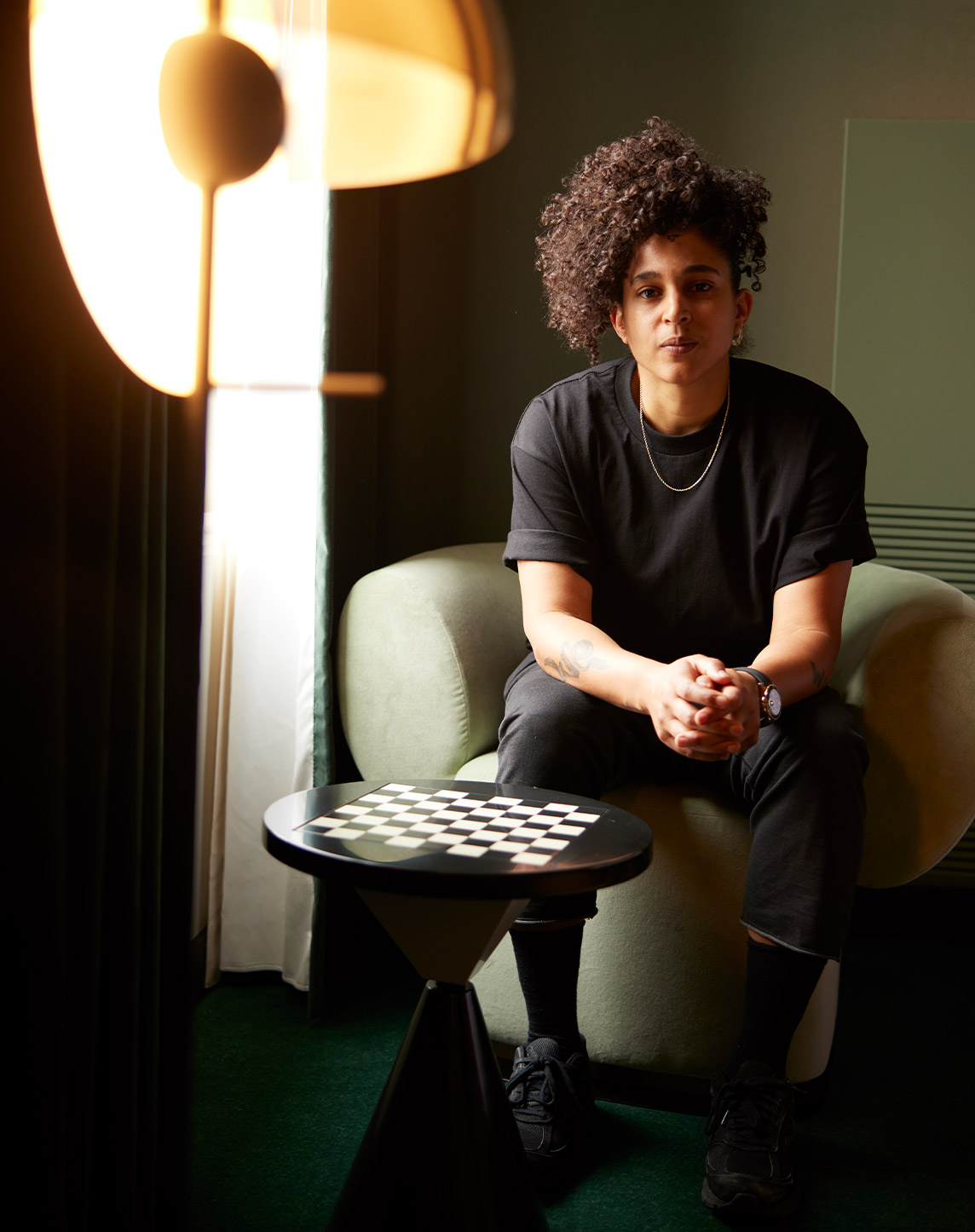
Shantell Martin sits in W New York – Union Square
You have the word “Why?” tattooed on your arm. What do people tend to say to you when they see that?
I got this tattoo many years ago and it says, “Why?” And fundamentally, I’m always asking this question of who are you? What are you doing? Why did you wake up today? And do you know why? It’s just a reminder just to ask yourself, why are you doing the things that you do? Why are you being yourself? Are you being true? A few people shout out “why,” but other than that, I like the idea of just putting that question out there as a mirror for other people.
For many years I’ve been giving out these stickers, and they say, “who are you?” I think I’ve been giving these out for over 15 years. In a way, this question is for myself as someone that was curious about who I was and that question initially pertained to my identity, coming from England, being mixed race. Someone that’s lived in different countries and wasn’t really sure who I was as a person based on how people treated me.
I think we all have baggage on how we see people when they’re from a different class, a different race, different background. And so for me, that was an internal question at first. But as time went on and I became more traveled and went to school, I noticed that it doesn’t really matter how smart you are or how traveled you are, how educated you are. We really don’t know the answer to this question of “who are you?”. We can say what we do and where we’re from and the roles that we play in life. But if I were to ask you, who are you at the core as a human, as a person? We don’t really have the vocabulary to describe that.
I’m finding my way in life through this language of words, lines and drawing and connecting, and through that, I hope that it helps me to figure out who I am as a person, and who Shantell is as a human.
For more on Shantell Martin, you can visit her website and follow her on Instagram @shantell_martin

